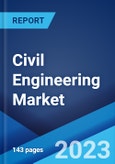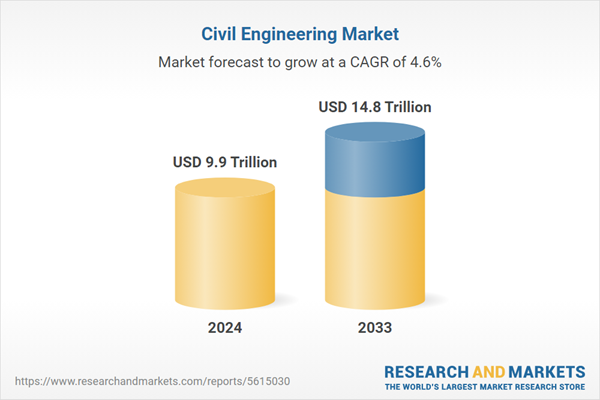Civil engineering refers to the professional practice of planning, designing, building, and maintaining different structures. It is employed in the aerospace industry for designing jetliners, airports, and space stations. It also finds application in the automotive industry for perfecting the load-carrying capacity of a chassis and improving the crashworthiness of bumpers and doors. Nowadays, there is a considerable rise in the need for civil engineers to set up schools, hospitals, private offices, waterways, harbors, seaports, residential structures, and power supply, drinking water, and energy systems across the globe.
Civil Engineering Market Trends:
With inflating disposable incomes, rapid urbanization and escalating global population, there is a significant rise in the demand for luxury residential properties. This represents one of the vital factors bolstering the civil engineering market growth. Moreover, governments of numerous countries are undertaking projects to develop smart cities and improve existing infrastructure, which is positively influencing the market. Apart from this, several civil engineering companies are adopting connected construction and modularization strategies through innovative technologies to boost operational efficiency and improve productivity. Furthermore, the leading players are entering into public-private partnerships (PPP) to target different business models and accelerate the shift toward digital transformation in construction activities. They are also incorporating advanced materials, such as durable, high-strength concrete, geosynthetics, geotextiles, fire-resistant timbers, and self-healing items. This is anticipated to increase the application of civil engineering in the oil and gas, chemical, power and utility industries around the world.Market Segmentation:
This report provides an analysis of the key trends in each segment of the global civil engineering market, along with forecast at the global, regional, and country levels from 2025-2033. The market has been categorized based on service type, application, and end user.Breakup by Service Type:
- Planning and Design
- Construction
- Maintenance
- Others
Breakup by Application:
- Real Estate
- Infrastructure
- Industrial
Breakup by End User:
- Government
- Private
- Others
Breakup by Region:
- North America
- United States
- Canada
- Asia-Pacific
- China
- Japan
- India
- South Korea
- Australia
- Indonesia
- Others
- Europe
- Germany
- France
- United Kingdom
- Italy
- Spain
- Russia
- Others
- Latin America
- Brazil
- Mexico
- Others
- Middle East and Africa
Competitive Landscape:
The competitive landscape of the industry has also been examined along with the profiles of the key players being ACS Actividades de Construcción y Servicios S.A., AECOM, Fluor Corporation, Hyundai Engineering and Construction Co. Ltd. (Hyundai Motor Company), Jacobs Engineering Group Inc., Laing O'Rourke, Power Construction Corporation of China Ltd., Royal BAM Group nv, Saipem S.p.A. (Eni S.p.A.), Strabag SE (Basalt-Actien-Gesellschaft), Tetra Tech Inc. and Vinci SA.Key Questions Answered in This Report
1. How big is the civil engineering market?2. What is the future outlook of civil engineering market?
3. What are the key factors driving the civil engineering market?
4. Which region accounts for the largest civil engineering market share?
5. Which are the leading companies in the global civil engineering market?
Table of Contents
Companies Mentioned
- ACS Actividades de Construcción y Servicios S.A.
- AECOM
- Fluor Corporation
- Hyundai Engineering and Construction Co. Ltd. (Hyundai Motor Company)
- Jacobs Engineering Group Inc.
- Laing O'Rourke
- Power Construction Corporation of China Ltd.
- Royal BAM Group nv
- Saipem S.p.A. (Eni S.p.A.)
- Strabag SE (Basalt-Actien-Gesellschaft)
- Tetra Tech Inc.
- Vinci SA.
Table Information
| Report Attribute | Details |
|---|---|
| No. of Pages | 148 |
| Published | May 2025 |
| Forecast Period | 2024 - 2033 |
| Estimated Market Value ( USD | $ 9.9 Trillion |
| Forecasted Market Value ( USD | $ 14.8 Trillion |
| Compound Annual Growth Rate | 4.6% |
| Regions Covered | Global |
| No. of Companies Mentioned | 12 |









